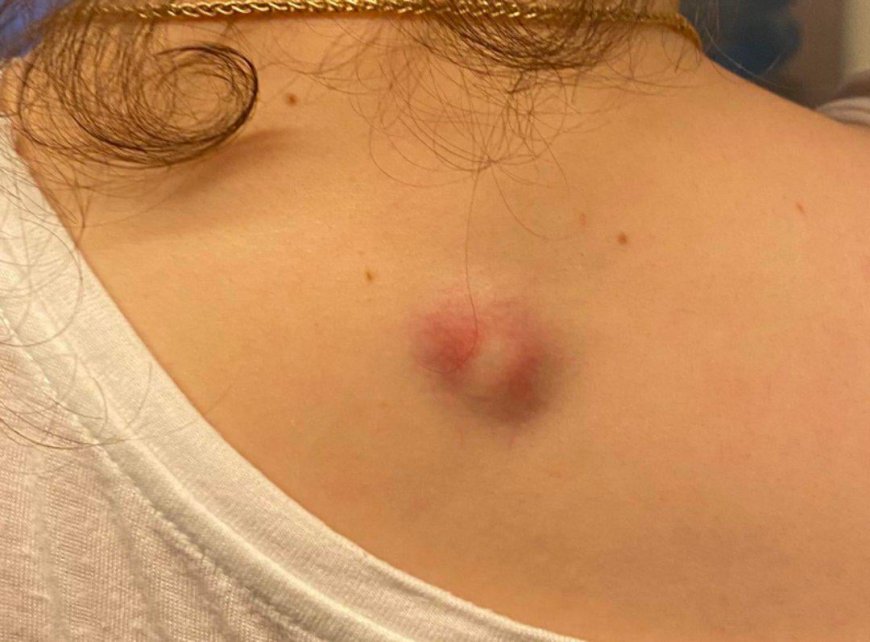Lipoma Treatment: Understanding Your Choices and Risks
Discover the best lipoma treatment in Dubai. Our surgeons offer safe and painless procedures for removing lipomas and enhancing appearances.

Lipomas are benign, soft tumors composed of fat cells that grow slowly under the skin. They are typically non-cancerous and often appear as small, lump-like formations that can vary in size. While lipomas are usually harmless, they can cause discomfort or cosmetic concerns, prompting individuals to seek treatment. This article explores the different treatment options available for lipomas, including their benefits and potential risks.
Lipoma Treatment Options
When it comes to Lipoma Treatment in Dubai, patients have several choices, each with its own advantages and considerations. Understanding these options can help you make an informed decision about the best course of action for your specific situation.
Surgical Removal
Surgical removal is the most common and effective method for treating lipomas. During this procedure, a healthcare professional will make an incision in the skin and remove the entire lipoma, including its capsule. This approach ensures that the lipoma is completely excised, reducing the likelihood of recurrence.
Benefits: Surgical removal offers a permanent solution, as the lipoma is entirely removed. It is particularly effective for larger or symptomatic lipomas that cause discomfort.
Risks: As with any surgical procedure, there are risks involved, including infection, scarring, and anesthesia complications. Additionally, there is a small chance that the lipoma may recur if not entirely removed.
Liposuction
Liposuction is a minimally invasive technique that involves using a thin, hollow tube called a cannula to suction out the fatty tissue from the lipoma. This method is less invasive than traditional surgery and typically results in smaller incisions and less scarring.
Benefits: Liposuction can be a good option for smaller lipomas or those located in areas where a smaller incision is desired. It generally involves a shorter recovery time compared to surgical removal.
Risks: The main risks associated with liposuction include the possibility of incomplete removal of the lipoma, leading to recurrence, as well as potential bruising, swelling, and infection.
Steroid Injections
In some cases, healthcare providers may recommend steroid injections as a non-surgical treatment option for lipomas. Steroids can help reduce the size of the lipoma by decreasing inflammation and breaking down the fatty tissue.
Benefits: Steroid injections can be a non-invasive alternative for patients who prefer to avoid surgery. This method can be effective for reducing the size of the lipoma and alleviating associated symptoms.
Risks: The effectiveness of steroid injections can vary, and there is a risk that the lipoma may not shrink significantly or may return after treatment. Side effects of steroid injections may include skin thinning or discoloration at the injection site.
Radiofrequency Ablation
Radiofrequency ablation (RFA) is a newer technique that uses radiofrequency energy to heat and destroy the lipoma's fatty tissue. The procedure involves inserting a thin probe into the lipoma and applying radiofrequency energy to break down the fat cells.
Benefits: RFA is a minimally invasive procedure with the potential for reduced scarring and a quicker recovery time compared to traditional surgery. It can be performed on an outpatient basis.
Risks: As with any procedure, there are risks involved, including potential damage to surrounding tissues, incomplete removal of the lipoma, and the possibility of recurrence.
Cryolipolysis
Cryolipolysis, commonly known as "cool sculpting," is a non-surgical method that involves freezing the fat cells within the lipoma. The fat cells are then naturally eliminated by the body over time.
Benefits: Cryolipolysis is a non-invasive procedure with minimal downtime. It can be a suitable option for individuals looking to avoid surgery and achieve gradual reduction in lipoma size.
Risks: The effectiveness of cryolipolysis for treating lipomas may vary, and there is a risk of temporary side effects such as bruising or numbness in the treated area. Additionally, the procedure may not be suitable for all lipoma sizes or locations.
Choosing the Right Treatment
Selecting the most appropriate treatment for a lipoma depends on various factors, including the lipoma's size, location, and symptoms, as well as the patient's overall health and preferences. It is essential to consult with a qualified healthcare professional who can assess your individual case and recommend the best treatment option.
Considerations for Treatment
When considering treatment options for lipomas, it is important to weigh the potential benefits and risks associated with each method. Discussing your options with a healthcare provider can help you make an informed decision based on your specific needs and preferences.
Key Considerations:
- Size and Location: Larger or more problematic lipomas may require surgical removal or alternative treatments.
- Health Conditions: Your overall health and any existing medical conditions may influence the suitability of certain treatment options.
- Recovery Time: Consider the recovery time associated with each treatment and how it may impact your daily activities and lifestyle.
Conclusion
Lipoma treatment offers a range of options, from traditional surgical removal to newer non-invasive methods. Each treatment comes with its own set of benefits and risks, making it essential to evaluate your choices carefully. By consulting with a healthcare professional, you can determine the most appropriate treatment for your lipoma, ensuring that you receive the best possible care and outcomes.
